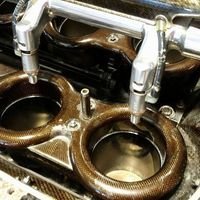This Quick Test May Save Your Big Hp Engine.
Announcements
-
Similar Content
-
Latest Posts
-
Hi from Canada, Both of my calipers are starting to fail. My car is a 2005 M35 Stagea ARX and I can't seem to find any parts or any cross reference caliper that would fit my car. Is there a company or a similar caliper that would fit and I could replace the OEM one. Or if anyone knows where I can find a new OEM. Any help is very appreciated. Let me know!
-
Maf is a question mark but TPS I have set at 0.47, the fact that I’m getting proper voltage range out of it with the key on leads me to believe it’s functioning properly. I’m getting proper voltages on basically everything. I still need to look up voltage ranges for z32 maf and test that
-
Honestly no not at all, but it’s a very basic tune, it’s stock injectors q45 tps and z32 maf. Other than that it’s a completely stock base map. The file is from nistune and from my understanding if it was tune related I would be able to unplug maf and tps and it would still start even if it was a really shitty start. I have tried starting it with coolant temp, maf, and tps unplugged none of those 3 togethor or individually changes anything
-
🏆 Skyline Supremacy Meets Mount Panorama Magic 🏆 Join SAU NSW as we take the long way to Bathurst, the home of GTR greatness. Saturday 30th August 2025 7:00AM Meeting Hanna Park North Richmond 7:30AM Departure Cruise Via Bells of Line Road 9:00AM Arrival to Stop 1: Golden Poplars Meadow Flat 9:45AM Arrival to Final Destination: Mount Panorama Motor Racing Circuit Meet Location: Hanna Park North Richmond Stop 1: Golden Poplars Meadow Flat Final Destination: Mount Panorama Motor Racing Circuit *Disclaimer* There will be a lead and follow car so no one should get lost. If you would like to attend or bring others along please put your name down and a +1 as numbers will be needed prior! This is NOT a race and we will all be adhering to all road rules. If this is what you want please come to one of our many track days. This is an official SAU:NSW event and will be run under a CAMS permit. One of the things that really sets our club apart is our commitment to being true enthusiasts. When on normal roads we strive to maintain good relations with the authorities as well as the public in general. When attending one of Skylines Australia NSW events please try to: • Be aware of surrounding environment and act accordingly. • Drive courteously on the state’s roads as a true enthusiast should. • Understand how important it is to maintain the good name of SAU NSW and thus, treat others accordingly. • Any misbehavior will not be tolerated and you will be asked to leave.
-
By soviet_merlin · Posted
What does it look like with highway driving? And yes, I had a similar thought as Duncan. It looks quite similar in my Stagea and I have made myself accept it as normal. Might have to look into it some day Highway gets as low as 10l/100km on my end so I'm not as worried about it being a mechanical issue. More likely just the tune on the haltech.
-






Recommended Posts
Create an account or sign in to comment
You need to be a member in order to leave a comment
Create an account
Sign up for a new account in our community. It's easy!
Register a new accountSign in
Already have an account? Sign in here.
Sign In Now